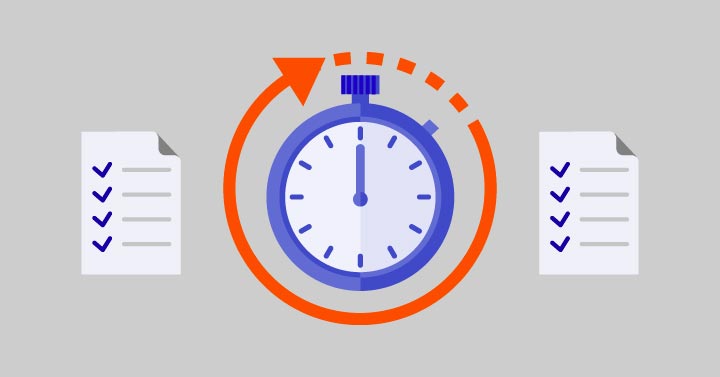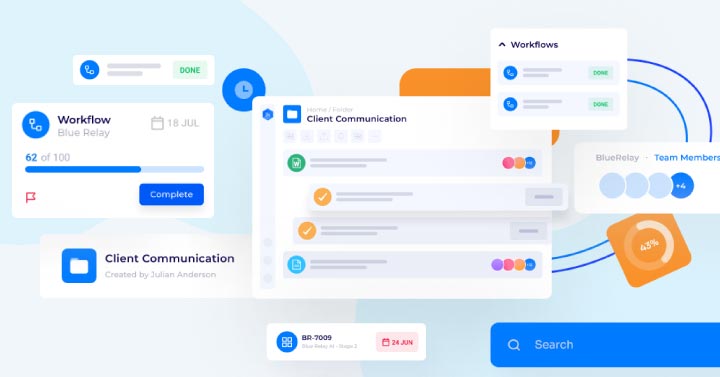How much value would you place in the ability to automate repetitive tasks, such as content review? When your business is laser-focused on regulation, compliance, and quality assurance, repetitive workflows do not have to dictate a slow-down in productivity, especially with content review. There is an actionable approach to speeding up your content review process and improving document workflow automation, which ultimately benefits the company.
Speeding up the content review process has many benefits for your company. It allows your team to meet important deadlines and milestones, and as efficiently as possible, while also meeting every element of the quality control process. But before you hit the “accelerate” button, there are a few steps to put in place to preserve quality assurance while maintaining efficiency.
Content Review Process Accelerators
Create a Standard Content Review Workflow
Putting a standard workflow in place saves time and reduces confusion. The most efficient method for completing a content review is to have a process agreed upon by your team and aligned with realistic, appropriate ETAs. When the team understands the timeline and responsible owner for each task, it eliminates the question of who is to do what.
Here is an example of what a standard workflow may look like:
- First draft goes to Technical Review
- Technical Reviewers have 48 hours to review
- Technical Reviewer sends back to Creator
- Creator sends to Management for Final Review
- Management has 48 hours to review and confirm
This example of a standard workflow works because the deadlines are clear, the responsible party is identified, and the team understands the suggested timeframe from start to finish.
Use Content Review Checklists
Each unique content type should include its own checklist for the reviewers. Since the checklist is dependent on the type of content being reviewed, there should be an individual checklist for each one. This gives the reviewers more support and a guide as they are reviewing numerous aspects of the content piece.
Although the checklist is unique to the content, it might include instructions such as ensuring the correct signatures are included, or double-checking the use of the appropriate watermark. Including the required information reduces the overall complexity and moves the content along to the next phase in the workflow. It also improves efficiency in case a specific team member is not available for the review, and someone else must step into the role of reviewing.
Make Content Review Requests Detailed
When team members have to guess what is needed, it creates delay and possible mistakes with the content. Providing the reviewer with as much concise, clear detail as possible upfront sets them up for success when reviews and changes are needed. It takes the guesswork out of the picture so the review requests can be accomplished.
For example, if the reviewer is in charge of editing a blog, they will need to know who the audience is, the technical reading level, and purpose of the content—without these key details, the reviewer is left to make assumptions. If the reviewer does not have this information in hand from the beginning, there may be delays when the content is sent back a second or third time because the reviewer did not make the right assumptions from the start.
Create Content Review Feedback Expectations
Another key element when you need to automate repetitive tasks is to set expectations on how feedback is presented. Content reviewers should feel empowered by team leads and management to provide actionable, valuable, and detailed feedback. When dealing with large documents, it is critical for the reviewers to understand how to provide succinct, helpful feedback so the document is updated successfully and there is no interruption to the standard workflow.
Here are other examples of parameters and guidelines to provide the reviewers and frame expectations:
- Ask for sources to support statements made within the text
- Use “we” and “I,” instead of “you” when providing feedback
- Clearly communicate the deadline for updates, if applicable
- Reviewer should indicate how changes should be updated within the document
Make the Content Review Process More Efficient with Blue Relay
One aspects all these tips have in common is the need to collaborate and communicate among team members. As a team leader, you likely understand firsthand how challenging this may be.
Blue Relay is a Content Review Process Automation Tool that can help your company adjust to working remotely and remain HIPAA Compliant. Blue Relay helps with Workflow Automation, Team Collaboration, and Document Review and Approval. Get your company back on track while remaining compliant.
- 100% Virtual Implementation
- Seamless Onboarding and Training
- Pre-built Workflows and Dashboards



